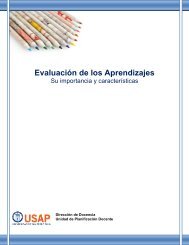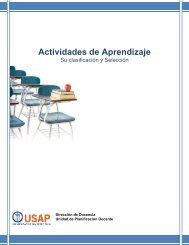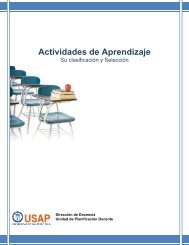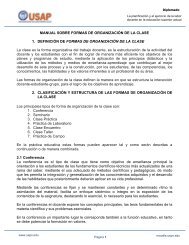Marzo-2012
Create successful ePaper yourself
Turn your PDF publications into a flip-book with our unique Google optimized e-Paper software.
10<br />
Cuatro créditos tributarios que pueden<br />
aumentar su reembolso<br />
Un crédito tributario es una reducción<br />
dólar por dólar de los impuestos<br />
adeudados. Algunos créditos<br />
tributarios son reembolsables, lo que significa<br />
que si usted es elegible y reclama uno,<br />
usted puede obtener el resto del crédito<br />
como un reembolso de impuestos incluso<br />
después de que su obligación tributaria ha<br />
sido reducida a cero.<br />
“Aquí hay cuatro créditos tributarios<br />
reembolsables que usted debería tomar en<br />
cuenta para aumentar el reembolso de su<br />
declaración de impuestos federales por ingresos<br />
del 2011” Dijo Joe Munoz, portavoz<br />
del IRS. “Si usted califica para estos créditos<br />
no deje de reclamarlos”<br />
<strong>Marzo</strong>/March 21 - Abril/April 20, <strong>2012</strong><br />
∫ 14 Años sirviendo a nuestra comunidad / 14 Years serving our community ∫<br />
1. El Crédito Tributario por Ingreso del<br />
Trabajo (EITC) es para personas que ganan<br />
menos de $49,078 de sueldos, el trabajo<br />
por cuenta propia o en la agricultura.<br />
Millones de trabajadores que vieron sus<br />
ingresos decaer en el 2011 pudieran calificar<br />
por primera vez. Los ingresos, edad y el<br />
número de niños calificados determinan el<br />
monto del crédito, que puede ser de hasta<br />
$5,751. Los trabajadores sin niños también<br />
pudieran calificar. Para más información,<br />
vea la Publicación 596 del IRS, Crédito por<br />
Ingreso del Trabajo.<br />
2. El Crédito por el Cuidado de Niños<br />
y Dependientes es para los gastos pagados<br />
por el cuidado de sus niños calificados menores<br />
a 13 años de edad, o por un cónyuge<br />
o dependiente discapacitado, mientras usted<br />
trabaja o busca un empleo. Para más<br />
información, vea la Publicación 503 del<br />
IRS, Gastos del Cuidado de Niños y Dependientes<br />
(en inglés).<br />
3. El Crédito Tributario Adicional por<br />
Hijos es para ciertos contribuyentes que<br />
reciben menos del importe total del crédito<br />
tributario por hijos. El crédito tributario<br />
adicional le puede dar un reembolso incluso<br />
si no adeuda ningún impuesto. Usted<br />
puede reclamar este crédito además del<br />
Crédito por el Cuidado de Niños y Dependientes.<br />
Para más información acerca del<br />
Crédito Tributario por Niños, vea la Publicación<br />
del IRS 972, Crédito Tributario por<br />
Niños (en inglés).<br />
4. El Crédito por Contribuciones al Ahorro<br />
para la Jubilación, también conocido<br />
como el Crédito por Ahorro, está diseñado<br />
para ayudar a los trabajadores con ingresos<br />
entre bajos y moderados a ahorrar para la<br />
jubilación. Usted pudiera calificar si sus<br />
ingresos están por debajo de cierto límite<br />
y usted contribuye a una IRA o a un plan<br />
de jubilación del empleo, tal como un plan<br />
401(k). El Crédito por Ahorro está disponible<br />
además de cualquier otro ahorro tributario<br />
aplicable. Para más información, vea<br />
la Publicación 590 del IRS, Acuerdos de<br />
Jubilación Individual (IRAs, por sus siglas<br />
en inglés).<br />
Existen muchos otros créditos tributarios<br />
que pudieran estar disponibles a<br />
A<br />
tax credit is a dollar-for-dollar<br />
reduction of taxes owed. Some<br />
tax credits are refundable meaning<br />
if you are eligible and claim one,<br />
you can get the rest of it in the form of<br />
a tax refund even after your tax liability<br />
has been reduced to zero.<br />
“Here are four refundable tax credits<br />
you should take into account to increase<br />
your reimbursement of federal<br />
tax revenues of 2011,” said Joe Munoz,<br />
spokesman for the IRS. “If you<br />
qualify for these credits don’t forget to<br />
claim them”<br />
1. The Earned Income Tax Credit is<br />
for people earning less than $49,078<br />
from wages, self-employment or farming.<br />
Millions of workers who saw<br />
their earnings drop in 2011 may qualify<br />
for the first time. Income, age and<br />
the number of qualifying children determine<br />
the amount of the credit, which<br />
can be up to $5,751. Workers without<br />
children also may qualify. For more<br />
information, see IRS Publication 596,<br />
Earned Income Credit.<br />
2. The Child and Dependent Care<br />
Credit is for expenses paid for the care<br />
of your qualifying children under age<br />
13, or for a disabled spouse or dependent,<br />
while you work or look for work.<br />
For more information, see IRS Publication<br />
503, Child and Dependent Care<br />
Expenses.<br />
3. The Additional Child Tax Credit<br />
is for certain individuals who get<br />
usted dependiendo en los hechos y sus<br />
circunstancias. Ya que se aplican muchas<br />
evaluaciones y límites a diferentes<br />
créditos tributarios, usted debería revisar<br />
cuidadosamente las instrucciones<br />
de su formulario de impuestos, las pu-<br />
EL AGUILA<br />
Four tax credits that can<br />
boost your refund<br />
less than the full amount of the child<br />
tax credit. The additional child tax<br />
credit may give you a refund even if<br />
you do not owe any tax. You can claim<br />
this credit in addition to the Child and<br />
Dependent Care Credit. For more information<br />
on the Additional Child Tax<br />
Credit, see IRS Publication 972, Child<br />
Tax Credit.<br />
4. The Retirement Savings Contributions<br />
Credit, also known as the<br />
Saver’s Credit, is designed to help<br />
low-to-moderate income workers<br />
save for retirement. You may qualify<br />
if your income is below a certain<br />
limit and you contribute to an IRA<br />
or workplace retirement plan, such<br />
as a 401(k) plan. The Saver’s Credit<br />
is available in addition to any other<br />
tax savings that apply. For more information,<br />
see IRS Publication 590,<br />
Individual Retirement Arrangements<br />
(IRAs).<br />
There are many other tax credits<br />
that may be available to you depending<br />
on your facts and circumstances.<br />
Since many qualifications<br />
and limitations apply to various tax<br />
credits, you should carefully check<br />
your tax form instructions, the listed<br />
publications and additional information<br />
available at www.irs.gov. IRS<br />
forms and publications are available<br />
on the IRS website at www.irs.<br />
gov and by calling 800-TAX-FORM<br />
(800-829-3676).<br />
blicaciones listadas e información adicional<br />
disponible en www.irs.gov. Los<br />
formularios y publicaciones del IRS<br />
están disponibles en el sitio de Internet<br />
del IRS en www.irs.gov y llamando al<br />
800-829-3676.

















